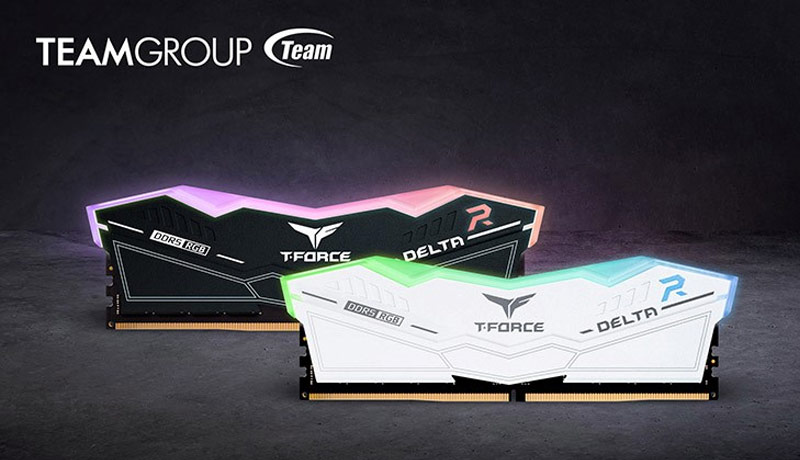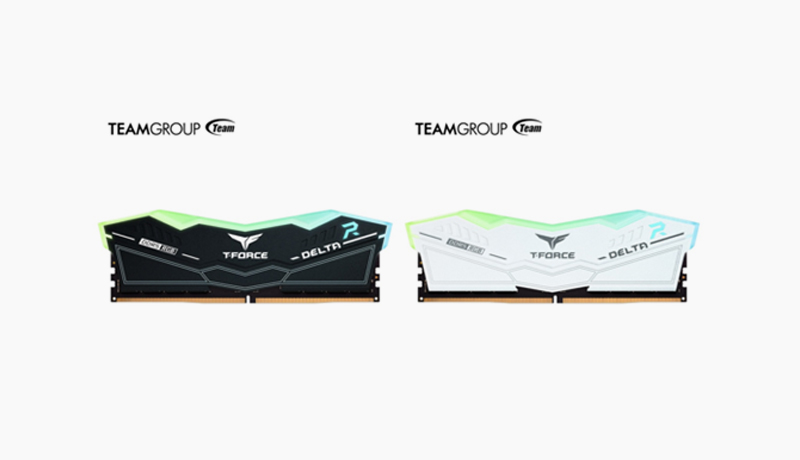
TEAMGROUP has announced the launch of T-FORCE DELTA RGB DDR5 gaming memory. TEAMGROUP has been at the forefront of next-generation DDR5 development since the end of 2020, collaborating closely with motherboard makers to conduct comprehensive validation testing. Whether testing and researching DDR5’s new PMIC design or XMP overclocking settings, the business has had a lot of success. TEAMGROUP has announced the debut of the DELTA DDR5 Memory Series, the first DDR5 modules that have RGB lighting, giving gamers who appreciate visual flare both next-level performance and eye-pleasing illumination.

The T-FORCE DELTA RGB DDR5 maintains the ultra-large spreader with wide-angled RGB edges and a simple geometrical surface, as seen in the DELTA DDR4 Series. The sleek stealth-fighter-inspired design adds to the overall appearance. Furthermore, each RGB LED in DELTA RGB DDR5 memory may have its colour and flashing speed changed separately, allowing for more customization of lighting effects than a standard RGB DDR4 memory. For illumination testing, ASUS, GIGABYTE, MSI, ASROCK, BIOSTAR, and other motherboard makers have received samples. Through the manufacturers’ lighting software, players will be able to simply design their own spectacular RGB effects.
This initial batch of next-generation RGB memory will enable Intel’s XMP 3.0 1-click overclocking and will be available in 16GB and 32GB capacities, with speeds ranging from 4,800MHz to 5,600MHz, significantly beyond the DDR4 generation’s limit. The new configuration-adjusting PMIC architecture is the main improvement in this version, aside from offering a very smooth experience and blazing performance. The warranty duration for the product was initially established at three years, but it will be modified based on advancements in raw materials or technology. The T-FORCE DELTA RGB DDR5 Memory Series will be available in the fourth quarter of 2021, along with the introduction of next-generation motherboards.
